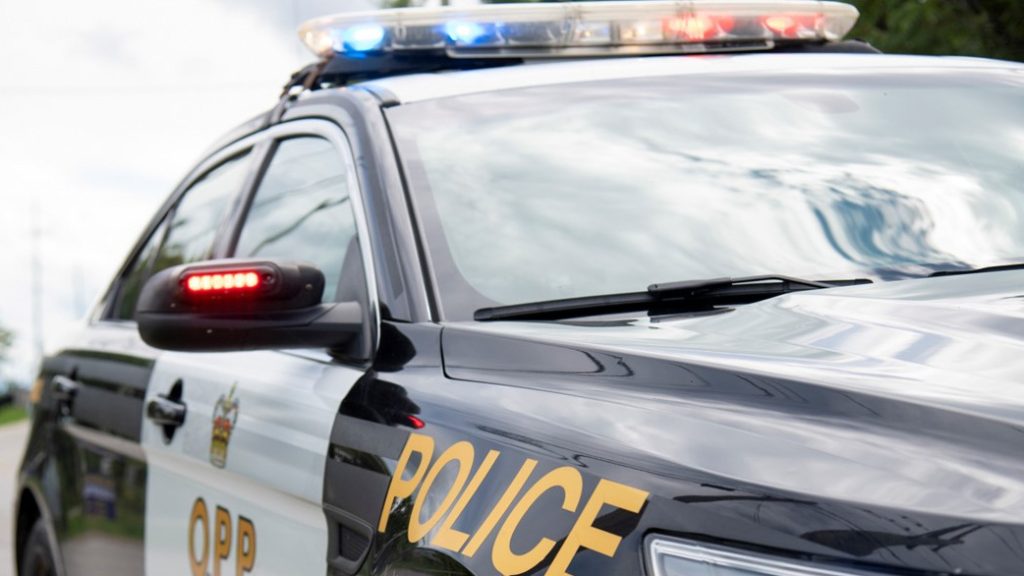Seven-Alarm Blaze Consumes Historic Toronto Building
Posted October 20, 2006 12:00 pm.
This article is more than 5 years old.
No one knows for sure how it started.
All they know is how it ended and how it will affect so many people.
An incredible seven-alarm fire that razed an historic paint store in the heart of the downtown core is out now. But the three-storey building at Queen and Sherbourne that housed Ontario Paint and Wallpaper will have to be torn down. It’s been in the hands of one family and in the same location for the past 93 years.
Thick black smoke, potentially mixed with toxic chemicals, wafted over a wide area of the city in the early morning darkness and officials were forced to evacuate residents from 10 apartments over fear the flames could spread.
They were lead into TTC buses to keep warm, all the while wondering if they’d have any homes to go back to. Some didn’t.
Firefighters were called around 2am and quickly realized the fire was a lot bigger than they could handle. Over 160 of their colleagues from 40 different stations across the city were called to the scene in a rare 7-alarmer, as pumper after pumper poured water on the stubborn conflagration.
Crews briefly made it inside the structure in an attempt to extinguish the fire before it raged out of control. But they were driven back when the heat became too intense and the floors collapsed.
“From a firefighter’s perspective, it’s a frustrating one when you can’t get in to get the fire out,” complained Division Commander Ron Jenkins. “It encompasses a lot of hazards with a lot of hose lines, the heavy streams. There’s tons and tons of water being put on the structure. So we have to be very careful.”
The flames quickly spread to the adjacent building, which shares a basement and an unattached building behind it. Thin alleyways and little room to maneuver made things worse. The age of the building made it like a tinderbox waiting to go up.
It took four hours before the bulk of the fire was out. By then, there was little left but a smouldering ruin.
And though one firefighter had to be brought to hospital after falling off a ladder, amazingly no one else was hurt. His injuries were considered minor and he was reportedly back on the scene to help by 6:30am.
Part of Queen St. was closed off as fire crews fought the blaze, which caused major problems for morning commuters. Streetcars and buses had to be diverted along nearby routes and transit riders were urged to take the subway instead if they could.
Damage has been pegged at about $2 million.
Bride-to-be loses everything to flames
So what constitutes a five, six, or seven-alarm fire?
David Sheen of Toronto Fire Services outlined the staged response to blazes. These numbers are only meant to be a guide and fire officials noted that different blazes require different responses, so the number of crew and equipment that are called out for these staged responses can vary.
1st Alarm
2 pumpers, 1 aerial truck, and 1 district chief
If it’s downtown or involves a highrise building, a highrise truck is used. If it’s a working fire an air supply truck, which provides breathing cylinders, and a heavy rescue squad are called.
2nd Alarm
5 pumpers, 2 aerials, 1 squad, 1 hazardous materials truck, 2 district chiefs, 1 platoon chief, 1 air supply vehicle, and 1 incident command vehicle.
3rd Alarm
8 pumpers, 3 aerials, 1 squad, 3 district chiefs, 1 platoon, 1 air lights, 1 hazard, 1 command vehicle, 1 division commander,
4th Alarm
11 pumpers, 4 aerials, 1 squad, 4 district chiefs, 1 platoon, 1 air supply vehicle, 1 hazardous materials truck, 1 command vehicle, 1 division commander
5th Alarm
14 pumpers, 5 aerials, 2 squads, 5 district chiefs, 1 platoon, 1 division commander, 1 command vehicles, 2 air supply trucks, 1 hazardous materials vehicles
“Plus, at that level you’re also getting other support staff,” he said.
6th Alarm
17 pumpers, 6 aerials, 2 squads, 6 district chiefs, 1 platoon, 1 division commander, 1 command vehicle, 2 air supply truck, 1 hazardous materials truck.
7th Alarm
20 pumpers, 7 aerials, 2 squads, 7 district chiefs, 1 platoon, 1 division commander, 1 command vehicle, 2 air supply trucks, 1 hazardous materials.








